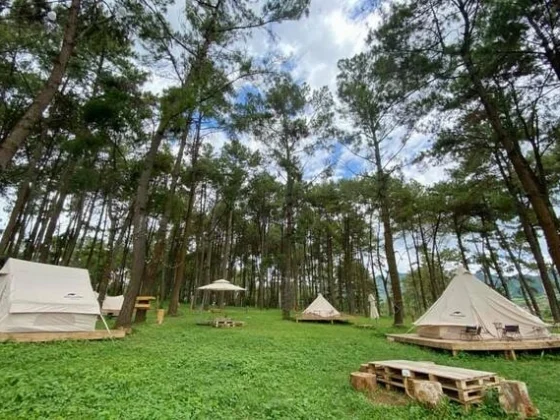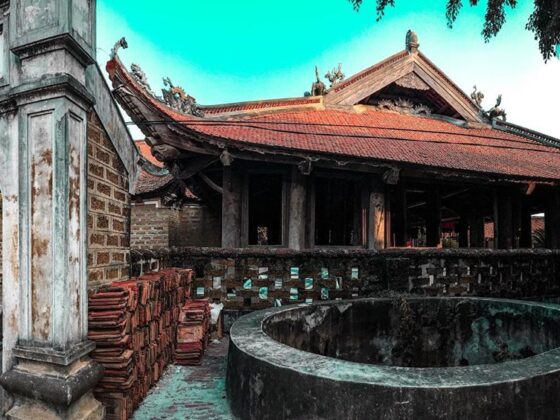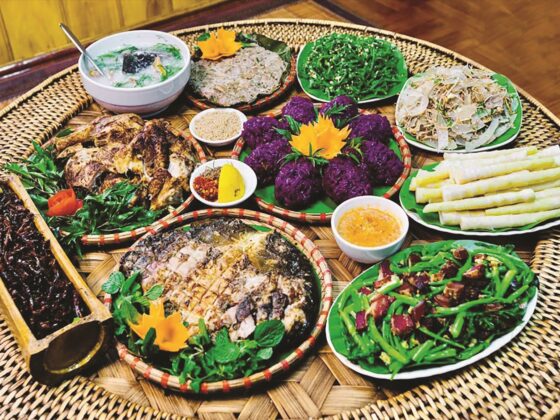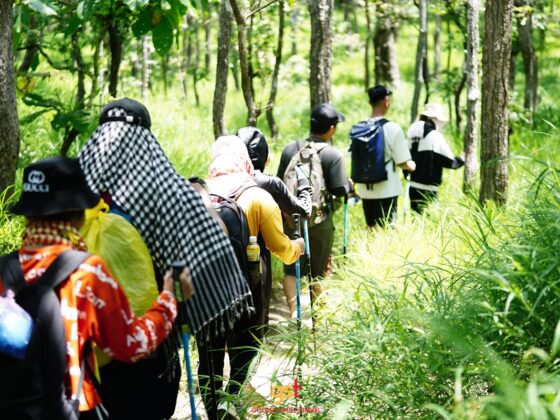Table of Contents Show
In the heart of Vietnam, where the mountains kiss the sky and the rivers carve through lush valleys, the Vietnam rice terrace systems of Mù Cang Chải and Hoàng Su Phì stand as monumental testaments to human ingenuity and resilience.
These breathtaking landscapes are not mere agricultural plots; they are artistic masterpieces sculpted by hand over generations. Through the delicate interplay of earth and water, the local ethnic communities have transformed steep mountainsides into vibrant fields of emerald, showcasing their deep connection to the land and culture.
Read more interesting posts here:
- Vietnam Culinary Tourism: A Taste of Authentic Discovery
- Exploring the Best Vietnam Camping Sites: The Fire Beneath the Stars
- Vietnam Cloud Hunting: The Rise of Summit Hiking in the North
The craftsmanship behind the Vietnam rice terrace heritage

The Vietnam rice terrace fields of Mù Cang Chải, nestled in Yên Bái Province, are renowned for their stunning beauty, particularly during the ripening season when shades of green give way to a tapestry of gold. This area is predominantly inhabited by the H’Mong and Thai ethnic groups, whose ancestors meticulously carved the hillsides, creating hundreds of kilometers of terraces that rise like steps toward the sky. Each contour and curve of the terraces narrates a story—of hard work, cultural traditions, and a profound respect for nature.
These terraces are the result of intricate craftsmanship; local farmers possess intimate knowledge of their land, relying on traditional agricultural techniques passed down through generations. Utilizing simple tools, they carefully construct the Vietnam rice terrace layers to optimize water flow and soil retention, illustrating the harmony between human effort and natural elements. This sustainable approach not only enhances rice production but also maintains the ecological balance necessary for sustaining diverse plant and animal life.
Hoang Su Phi as a hidden Vietnam rice terrace gem

Further north in Hà Giang Province lies Hoàng Su Phì, another stunning destination known for its magnificent Vietnam rice terrace views. Often overshadowed by their more famous counterpart in Mù Cang Chải, the terraces here are equally, if not more, breathtaking in their design. Carved along steep hills and enveloped in thick mist, Hoàng Su Phì offers a more secluded and authentic experience.
Visitors to Hoàng Su Phì are often greeted by friendly local communities, including the Dao and Tay ethnic groups. Engaging with these communities fosters a deeper appreciation for the agricultural practices that have shaped this unique Vietnam rice terrace region. Travelers have the unique opportunity to witness the hard work involved in planting and harvesting rice while also enjoying the local cuisine, rich in flavors and traditions. This cultural immersion adds an essential layer to the experience, highlighting the integral role of rice in Vietnamese life and cuisine.
The aesthetics of nature in Vietnam rice terrace agriculture
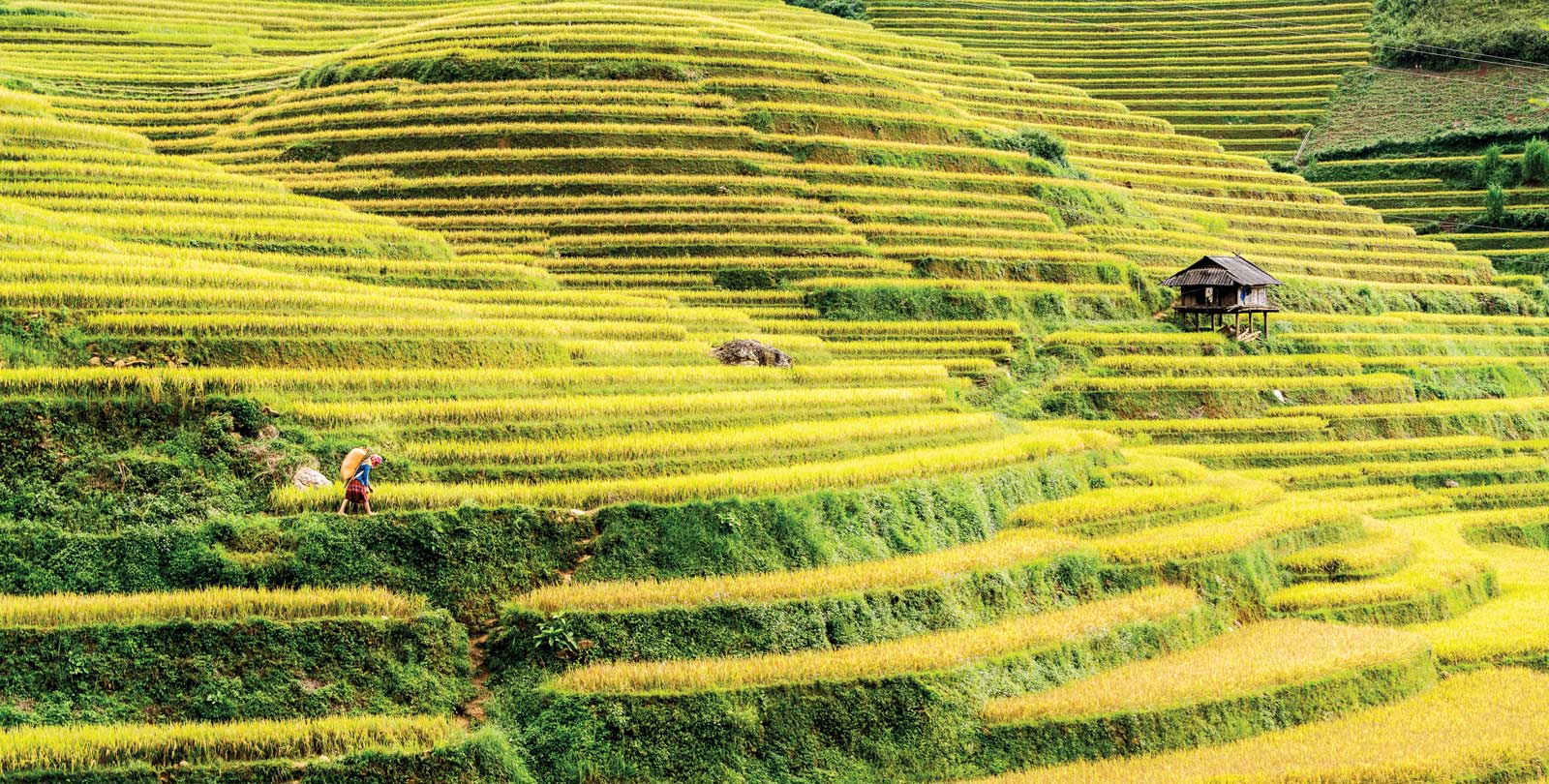
The beauty of a Vietnam rice terrace goes beyond its agricultural value; it serves as a vivid canvas showcasing the relationship between human creativity and the environment. The terraces change dramatically throughout the seasons; in spring, the fields are flooded with water, reflecting the sky like mirrors, while autumn brings a golden hue that captivates the senses. This dynamic landscape illustrates the cycles of life, nature’s rhythms, and the enduring spirit of the communities that call these regions home.
The terraces have become a focal point for photographers, nature lovers, and adventurers. Festivals celebrating the rice harvest attract visitors from around the world, turning these breathtaking agricultural landscapes into vibrant cultural hubs. Such events not only honor the hard work of local farmers but also promote sustainable tourism, encouraging visitors to respect and preserve these stunning Vietnam rice terrace environments.
Conclusion
In summary, the Vietnam rice terrace artistry found in Mù Cang Chải and Hoàng Su Phì is a powerful reminder of the interplay between culture and agriculture. These sprawling fields, shaped by generations of farmers, are living sculptures that reveal the patience and love of people devoted to their land. As travelers explore these magnificent landscapes, they encounter not just a feast for the eyes but a profound connection to the heritage and traditions of Vietnam’s ethnic communities.
In a world facing rapid change and industrialization, these rice terraces symbolize resilience and sustainability. They offer an invitation to appreciate the beauty and significance of agricultural practices that have nurtured generations. As you traverse the pathways of the Vietnam rice terrace slopes, you may find yourself woven into the intricate tapestry of Vietnam’s natural and cultural heritage, experiencing firsthand the artistry that makes these landscapes truly extraordinary.
Join our vibrant community on Facebook to share your trekking stories and tips, and don’t forget to like the ExoTrails fanpage for the latest updates and exclusive offers!
Frequently Asked Questions (FAQs)
1. When is the best time to see a Vietnam rice terrace in its golden season?
The golden season, when the rice turns yellow and is ready for harvest, typically occurs from mid-September to early October, offering the most spectacular photography opportunities.
2. Which location has the most famous Vietnam rice terrace views?
Mù Cang Chải in Yen Bai Province and Sapa in Lao Cai Province are the most famous, while Hoàng Su Phì offers a more rugged and less crowded experience.
3. How are the Vietnam rice terrace fields constructed?
They are hand-carved into steep mountain slopes by local ethnic minorities using traditional tools to create flat surfaces that retain water for growing rice in high-altitude areas.






